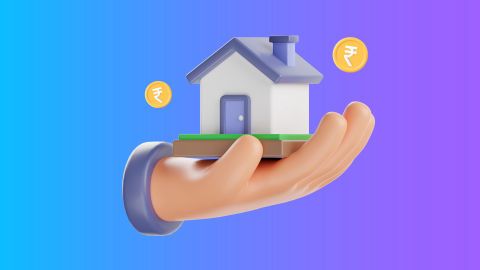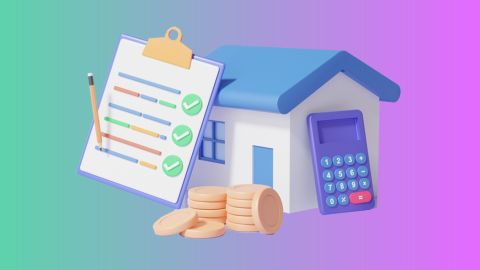Land measurement is a crucial aspect in Uttar Pradesh (UP), especially when it comes to buying, selling, or inheriting property. Understanding the various land measurement units and their conversions is essential for everyone involved in real estate transactions. This knowledge also plays a vital role in property taxation and legal disputes. If you are looking to finance based on your land-related activities, consider Bajaj Finserv Loan Against Property as a viable option. With attractive interest rates and flexible repayment tenures, it can help you manage large expenses effectively. Check your eligibility and apply for a loan to leverage your property's value for better financial planning.
Historical Background of Land Measurement Systems in Uttar Pradesh (UP)
The land measurement systems in Uttar Pradesh have evolved significantly over time. During the Mughal era, units like Bigha, Biswansi, and Biswan were commonly used for measuring land. The British colonial period introduced more standardised units like acres and hectares, which are still in use today. The shift from traditional to modern measurement systems was driven by the need for uniformity and accuracy in land records and transactions. The government has also undertaken various reforms and digitisation efforts to streamline land records and measurement systems in UP.
Common Land Measurement Units in Uttar Pradesh (UP)
Understanding the different land measurement units is crucial for property transactions in UP. Below are some commonly used units:
- Bigha: Traditional unit varies from region to region.
- Biswa: Smaller unit, often used with Bigha.
- Katha: Commonly used in certain parts of UP.
- Acre: A more standardised unit, widely used in modern land transactions.
- Hectare: Metric unit, used in official records and documentation.
Conversion of Land Measurement Units in Uttar Pradesh (UP)
Accurate land conversion is essential for clear and fair transactions. Below is a table summarising the conversion of various land measurement units in UP:
Unit |
Equivalent in Square Metres |
Equivalent in Acres |
1 Bigha to Square Meter |
2,500 to 3,000 sq m |
0.62 to 0.74 acres |
1 Biswa to Square Meter |
125 to 150 sq m |
0.03 to 0.037 acres |
1 Katha to Square Meter |
126.5 sq m |
0.031 acres |
1 Acre to Square Meter |
4,046.86 sq m |
1 acre |
1 Hectare to Square Meter |
10,000 sq m |
2.47 acres |
Understanding these conversions can help in calculating the exact value of land, which is vital for buying, selling, and even availing of loans against property.
Important Acts and Regulations Related to Land Measurement in Uttar Pradesh (UP)
The legal framework governing land measurement in UP includes various acts and regulations. The Uttar Pradesh Land Revenue Act, 1901, is one of the foundational laws that govern land records, measurement, and management in the state. Other important acts include the Uttar Pradesh Zamindari Abolition and Land Reforms Act, 1950, which significantly changed landholding patterns. These regulations aim to protect landowners' rights, ensure fair transactions, and maintain accurate land records.
How to Measure Land Accurately in Uttar Pradesh (UP)
Accurate land measurement requires the right approach and tools. The most common methods include:
- Total Stations: Advanced devices that measure angles and distances for precise land surveys.
- GPS Systems: Used for large-scale land measurement by capturing satellite data to determine exact coordinates.
- Electronic Distance Measurement (EDM) Devices: Provide accurate distance measurements by using electromagnetic signals.
For smaller land parcels, traditional methods are still in use:
- Chains and Tapes: Manual tools for measuring shorter distances.
- Compasses: Help determine direction and angles in smaller, less complex areas.
Additional Tips:
- Hire a Certified Land Surveyor: To ensure legally acceptable and accurate measurements.
- Double-check measurements: Especially for boundary disputes or legal purposes.
- Use Software: For mapping and analysis of surveyed data for better visualization and planning.
Tools and Techniques Used for Land Measurement in Uttar Pradesh (UP)
Several tools and techniques are employed to measure land accurately in UP:
- Total station: An electronic device that integrates an electronic theodolite with an electronic distance metre.
- GPS devices: Used for precise location data, especially in large areas.
- Measuring chains and tapes: Traditional tools, suitable for small plots.
- EDM devices: Electronic Distance Measurement devices offer high accuracy.
- Drone surveying: Emerging technology used for large and complex terrains.
Challenges in Land Measurement in Uttar Pradesh (UP)
Measuring land in Uttar Pradesh comes with several challenges:
- Varied topography: Differences in terrain can lead to measurement errors.
- Discrepancies in local units: Traditional units like Bigha and Biswa vary from region to region, leading to confusion.
- Lack of modern tools: Not all areas have access to modern land measurement tools, resulting in outdated methods and inaccuracies.
- Legal disputes: Boundary disputes often arise due to inaccurate measurements and outdated records.
Recent Updates and Changes in Land Measurement Systems in Uttar Pradesh (UP)
Recent updates in land measurement systems in UP have focused on digitising land records and using advanced technologies. The Bhoomi Sudhar Nigam initiative aims to streamline land records and ensure accuracy in land transactions. The state government is also promoting the use of digital cadastral maps to reduce disputes and enhance transparency. For those looking to manage land-related expenses, Bajaj Finserv Loan Against Property offers a seamless solution with flexible terms. You can calculate your EMI and choose the plan that best suits your financial needs.
Conclusion
Understanding land measurement in Uttar Pradesh is crucial for everyone involved in property-related activities. With a mix of traditional and modern units, it becomes essential to know the exact conversions, regulations, and tools available for accurate land measurement. For those who own property in UP and need financial backing, considering Bajaj Finserv Loan Against Property can be a strategic move. It offers attractive interest rates, minimal documentation, and flexible repayment options, ensuring peace of mind in managing large expenses.




